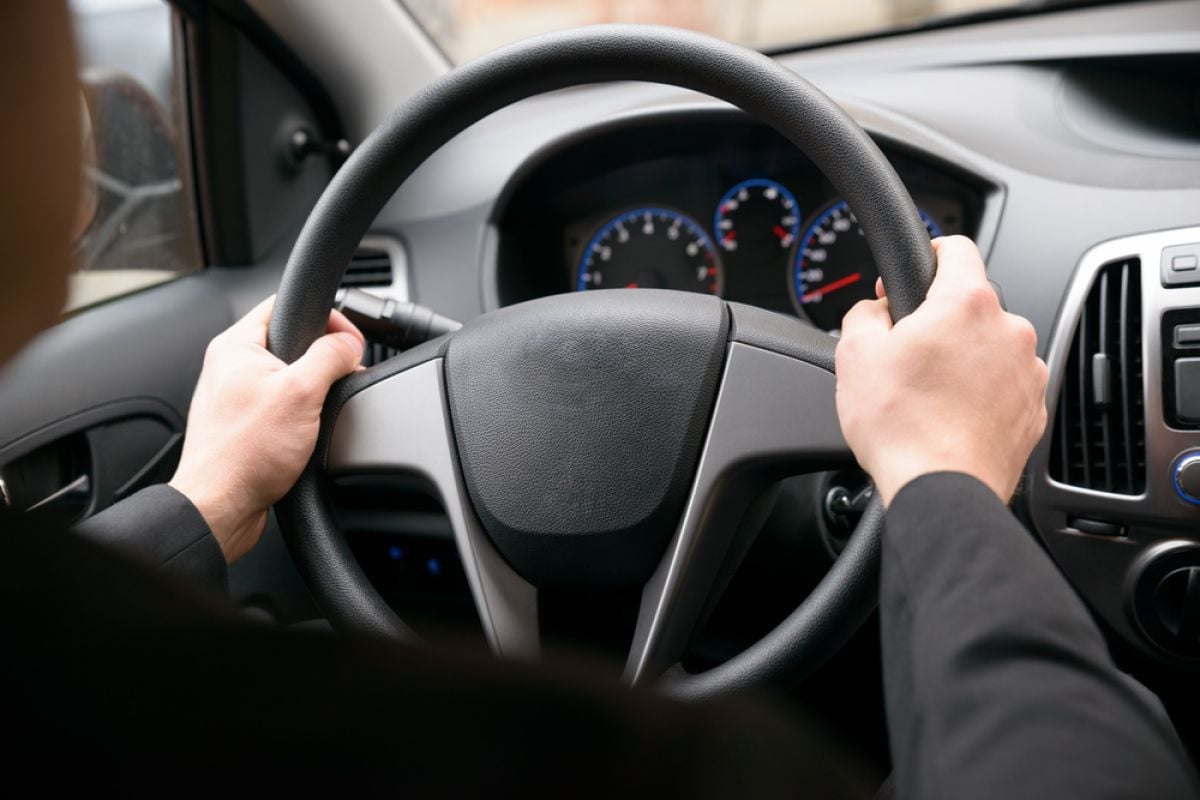
This article offers a comprehensive guide for obtaining a driving license in Oman – which covers tips, techniques and recommendations. It provides a description of all driving tests administered during various stages of this process.
After driving for about two decades in parts of Asia (mainly my home country, Pakistan and Malaysia where I stayed for over a decade), I arrived in Oman in early 2019. While I expected that my international driving permit from Malaysia may be converted to local driving license, I was not that fortunate. Therefore, I have to start all over again to get a new driver's license in my new country of work.
I was told that luckily I can undertake the driving test in an automatic car, which was not permitted for male driving candidates in Oman until the last year. So I got myself registered as a fresh candidate and started my journey of getting a driving license in Oman. This journey was jagged and full of surprises as almost everyone whom I consulted about getting a new driving license has enough 'horror stories' to share with me about their own journeys as well as that of their family members and friends.
Noticing this challenge, I decided to go a bit systematic about the whole process. During the test period, in addition to doing a lot of practice, I also consulted multiple online resources (blogs, videos and guides from Oman and several countries in the region and outside) with the help of which I prepared a checklist of a typical driving test. After each unsuccessful attempt, I kept on updating my initial checklist and tried not to repeat my earlier mistakes.
I was about to get through the whole process in about two months, though this period felt to me no less than two years' long.
I believe that this checklist is sufficiently comprehensive and if you can take note of these points, you can become successful in getting a driving license within a few attempts (or may be in the first one).
However, realistically speaking, do remember that even for proficient and experienced drivers, it could take on average 3-7 attempts to obtain the driving license in Oman. So be calm and persistent until you get your desired goal!
DRIVING LICENSE GUIDE FOR OMAN
First step of getting driving license in Oman is to get yourself registered with Royal Oman Police (ROP) [needed documents: your passport, resident card, vision test from an authorised optical shop) and to arrange a driving instructor. Please remember that all instructors are locals. In addition, women drivers have a choice to get a female instructor, though I noticed several women being trained by male instructors. ROP will issue you a 'green book' where all your driving test record will be maintained. This book also has a list of traffic signs that will be tested during the 'sign test' (see Stage 1 below).
Do Your Homework for Trainer Selection:
While you have a right to change the trainer during the process, most people generally don't change them once started. It is better to talk to some of your friends who have passed the test not long ago and seek their recommendations. Ask your referees about the professionalism, language skills and most importantly, manners (akhlaaq) of those trainers. Similarly, clear discuss and agree on the per hour and per test charges the instructor will charge from you, including for each failed test and pass tests in stage 1 and stage 2 (for understanding the stages see below).
Do your homework before you start as your trainer could make this journey either pleasant or dreadful.
Be Patient During the Training Process:
Getting a driving license in Oman could be a long and exhausting process. With any disappointment (failed test or behaviour of your trainer or of others), don't lose sight of your aim. A focus on your ultimate objective will keep you moving. Keep your morale and motivation high and don't lose your patience in testing situations.
Maintain a Notebook of Tips and Techniques:
It is always better to maintain a notebook of tips and techniques that are shared with you by your instructor during the training process or ROP examiner after an unsuccessful test attempt. Your ROP examiner will usually inform you about the shortcoming (s)he has noticed during the test.
For ease, you can print or copy the below guidance and keep on updating it, if needed.
IN OMAN, DRIVING TEST IS ORGANISED IN TWO STAGES, AS EXPLAINED IN THE FOLLOWING:
Stage 1:
The first stage consists of three tests in a single day: Sign Test, Drum Test and Slope Test. A single fee is applicable for this stage. With thorough study (mainly for sign test) and practice, it will not be difficult for you to pass all the tests in a single attempt. Here are some tips for each test:
Sign Test:
Sign test is a short oral test administered by the ROP official which aims at verifying your knowledge of major traffic signs. It generally last for only a few minutes.
Full list of traffic signs is available in your test book issued by the ROP. Similarly, traffic sign posters are displayed in the test area of ROP offices.
For the online resources, you can check the following link: http://www.adcidl.com/pdf/Omani-Road-Teraffic-Signs.pdf
As you would notice, traffic signs are of many types, which are divided into various categories such as: mandatory, warning, preventive and guiding signs. With a regular practice, you can master them and pass the oral test with ease. Therefore, study and practice as much as you can, especially 2-3 days before the test date.
Those who clear the sign test are eligible for the drum test on the same day.
Drum Test:
Drum test is the core test in stage 1. Therefore, you have to allocate ample time to practice this test so that you can pass it with ease.
Drum test is primarily a test of parking skills in which you have to drive your car (forward and reverse) through a narrow passage with four drums on each side placed at an equal distance ('drum passage').
There is nobody except you in the car while performing this test, though an official is available outside to guide you when to start and stop.
First step is to take the car forward through this 'drum passage' without touching any of the drums and turn right until you reach the middle of two additional drums placed in the front.
Second step is to drive the car in reverse and go through this drum passage until you reach your initial starting position.
Third step is to take the car forward through the same passage again but turn left until you reach the middle of two additional drums placed on the left side.
Fourth step is to repeat the second step, and drive reverse until you reach your starting position.
Generally first and third steps are relatively easy if you know some driving. However, even for expert drivers, second and fourth steps (to drive the car in reverse) are challenging and need confidence and practice. The key to successfully navigating the drums while driving in reverse is to know when to turn your steering in full so that you go through the drum passage with ease without touching the sides.
Rule: For this purpose, instructors generally share a trick which proved perfectly helpful in my case:
While doing the reverse, keep watching the first drum in the first row (closer side) from the small window of your car after the rear passenger seat until you can see about 25% of the second drum in second row. At this stage, turn your steering fully but slowly until you are perfectly in the middle of drum passage. At this point, both reverse mirrors on right and left side should show you four drums on each side in the same perfect order.
After reaching this point, fully straighten your steering and drive your car slowly in reverse until you cross all the drums successfully.
Please remember that this test can be performed best if it is done at a slow pace, as relatively fast speed does not leave any room for correction in case of a mistake or imperfect move.
A Caution: While the drums are perfectly arranged in the actual test area, unfortunately the practice areas where instructors will take you for training are not precisely organised. Almost in every test area, drums are placed in somewhat different manner with uneven distance, which will not allow you to clearly visualise the point when you have to make a full turn of your steering while reversing during test time. Therefore, while more practice will surely help, unfortunately, you have to bear with this imperfection in the training facilities.
However, for the actual test day, please keep in mind the rule in point 5 above, which worked very effectively in my case.
Slope Test:
As the name suggests, it is a test of how best you can drive your car in a forward slope without any sound, jerk or uncontrolled reverse movement after making a halt.
At the start of the test, you will drive upwards on the slope until red light is switched on. At this point, apply the break and come to an absolute halt at the stop line.
At this point, also apply the handbrake which will help you to control the car when moving forward on the slope.
After the light turns green, slowly press the accelerator and release the handbrake in a coordinated manner such that car moves forward and passes the light.
A good practice in synchronizing the accelerator and handbrake will allow you to have a smooth drive without any shaking, jerk, sound or reverse movement of the car.
Be watchful of the red and green light and take appropriate action accordingly. There is no need to wait long on the signal as the whole test can be actually completed within a few minutes.
After passing the stage 1 tests, you are qualified to appear for the stage 2 (Road Test) that is taken in real time conditions. Generally, instructors will start the road test training after you pass the stage 1 tests.
Go through sufficient road test training until you and your trainer feel comfortable. At this stage, you can ask the instructor to make a booking for your road test. The instructor should inform you when he has made the booking, generally one or two days before the test.
Stage 2: Road Test (Automatic Vehicle)
Do Short Practice in the Morning of Test Day:
Before you go for a test, it is better to plan with your trainer to give you a 30-40 minutes' practice in the morning of the test day, which will help you to refresh the main points and focus your mind during the test. It goes without saying that you must do a few hours of training session the day before the test.
Dress your best:
While going for the test, dress the best you possibly can!
It is expected to create a good image about your stature in the mind of the examiner.
Avoid sunglasses:
You should not wear your sunglasses during the test as your examiner would like to observe how you move your eyes at all times, especially when you are performing a lane change, overtaking a vehicle or doing a reserve.
Listen to the instructions carefully:
Give full attention to the instructions of the examiner, but politely inquire if you are unclear about any of his/her instructions.
Remember if your examiner doesn't mention which side to go at a crossing, just go straight. It is important because many people are failed only due to this mistake.
Keep in Mind the Initial Moves:
Recheck all your mirrors, even if they are accurately adjusted already.
Also make a seat adjustment and ensure that you are fully comfortable and have adequate access to the accelerator and break.
Ask your examiner and instructor to wear their seat belts as well.
After fastening your seat belt, do the following:
Depending on your car position, put your right or left signal on in the direction you wish to go
release handbrake
look left/ right
Move gear to D (drive), and
then turn the vehicle and press the accelerator gradually.
Maintain a Good Speed & Follow Standard Driving Rules:
Don't drive too slow or too fast. Drive confidently within the speed limit when on road, about 5-7 km/h lower than the maximum speed permitted on the road.
Avoid touching yellow line on the sides at any cost. It is a straight FAIL.
Endeavour to drive in the middle of the lane, instead of touching the side or middle lines.
Use of mirrors is a fundamental part of driving test. Make it a habit to use all three mirrors (back and side ones) at all times, especially when changing lanes, entering roundabouts or reversing the car.
Always drive on the right most (slow) lane when driving on a road. However, you can take faster lanes when entering into or existing from a roundabout (see point 12 below) or front car is extremely slow or stuck for some reason (see point 10 below).
Entering the main road (T-Junction):
When entering the road, wait at the "Stop" sign for 3-4 seconds, even if you don't find any vehicle on the main road. If you don't, then you FAIL the test. It is considered as a significant error.
Make sure the vehicles from left are at a safe distance ' on all lanes. Do not enter if only right most lane is clear.
Immediately accelerate the car after entering the main road, so that vehicle coming from behind does not have to slow down or apply hard breaks.
Remember to apply a complete halt at all 'stop' signs.
Keep a safe distance from the Front Vehicles:
If stationary, then you should be able to see the tyres of front car.
In moving position, keep 2-3 seconds distance between your and the front car.
At a signal, you should be able to see the front stop line on the road.
Changing lanes:
You will be almost surely closely watched how smoothly you change lanes.
Follow the below steps for changing lanes, either on the direction of examiner or either your way is obstructed for some reason (see next point):
Always change lane at the dotted line.
Check the rear view mirror and side mirrors.
When all's clear, don't miss to check the blind spot.
Check the speed of the car behind.
Then, turn on the indicator.
Speed up your vehicle, stay within the speed limit, and then slow down again after changing the lane.
You can overtake:
If the front car is either stationary or below the speed limit, you should inform the examiner why you want to overtake and then overtake even without his/her explicit approval.
Applying Brakes:
The key to smooth driving is to apply the brakes progressively, which will be closely watched by your examiner.
Hard brakes are generally applied for two reasons: 1) there is no safe distance between you and the front car; 2) driver is not looking far ahead e.g. upcoming traffic lights or a junction.
Both the reasons will lead your examiner to think that you are a reactive diver, and cannot drive proactively and safely.
Make sure you start reducing your speed so that you can apply the brakes at the desired point.
Roundabouts:
You will be almost definitely taken to a roundabout. So do a good practice. For many test drivers, this step is generally the hardest to pass.
Never enter a roundabout, unless the road is clear from the left side IN ALL LANES.
Remember various types of instructions that your examiner can give you. Mainly, they can be covered in the following six categories.
Practice each of them well so that you can quickly make a picture in your mind of your next moves when examiner gives you an instruction:
Go Straight
Go Right
Roundabout Left
Roundabout Comeback
For the first two (Go Straight and Go Right), take a right (outer) lane. For the Other Two (Roundabout Left and Roundabout Comeback) take the innermost lane.
The examiner can also ask you some complex manoeuvres. The most common ones are:
Complete (or Full) Roundabout - Straight
Complete (or Full) Roundabout - Right
If so instructed, take the innermost lane, take a 360% (full) circle and then go straight or right as advised.
For manoeuvres (iii) to (vi), you will exit at the fast lane. After entering the fast (left) lane of the road, give a right indicator and slowly move to the right most lane.
Remember, you always have to give RIGHT indicator while exiting the roundabout.
Use the indicators for all entry and exit points at a roundabout, except when you want to go straight (in the outer lane).
Road Signs:
Pay very close attention to all road signs in the test. Examiners care the most about safety and your respect for road signs. If the sign says STOP, you need to make a full stop even if there is no vehicle.
Also take special care of speed limits as even a small breach can make you fail.
Make yourself comfortable around the test area and make sure you remember the speed limit and important signs on each road e.g. school and hospital sign, speed breakers etc..
Training instructors are generally aware about the speed limit if you don't see a speed limit sign on a specific road. But you can collect all this information only before the actual test.
Reverse:
While reversing the car, reverse towards the lane where you intend to drive forward.
Don't reverse on a one-way lane.
Always put the emergency/hazard lights 'on', when reversing the vehicle.
Your use of back and side mirrors will be closely watched by the examiner. So make good use of these mirrors.
Apply Emergency/Hazard Light Button on Slowing Down:
Don't forget to press emergency light button when you have to slow down due to a traffic jam on the road.
Similarly, in the parking area, if you have to get slow because your front vehicle is parking or getting out of the parking lot, you have to apply emergency light.
In other countries where I have driven, these hazard lights were commonly used in the situation of real emergency: e.g. when a car breaks down or experiences an accident. However, in Oman, the practice is to apply these lights as soon as you have to significantly or suddenly slow down, whether on main road or in parking areas. Due to this common practice, your examiner will expect you to apply this button frequently. So make it your habit, if you are not previously used to it.
Parking:
As you are reaching close to your destination, keep calm and don't lose focus as many test drivers make a mistake at this stage and get failed. Remember the following points:
Don't rush when asked to park. Most people hurry at this stage and make a costly mistake.
Find a safe parking spot, with one or ideally two combined lots vacant (which will allow you to choose and park with relative ease).
See if any car is coming from behind.
Apply progressive breaks according to the distance of parking spot. Make steering straight.
Change the gear to Neutral (N) => Apply Handbrake => Change the gear to Parking (P)
Remove the seat belt.
Say No to the Examiner, if he advised you something against the rules.
Don't park at the slot reserved for special people (generally marked with a wheelchair) or in front of a gate, entrance of bus stop.
Similarly, politely refuse to park the vehicle at the roadside if advised to park in front of a 'no parking' or 'no stop' sign. Furthermore, say 'no' if the examiner asks to drive beyond the speed limit or reverse the car on a one-way road.
I HOPE THESE TIPS AND SUGGESTIONS WILL HELP YOU TO SAIL THROUGH THIS JOURNEY SMOOTHLY'¦ AND FAST.
GOOD LUCK!
(BY: ZAHID UR REHMAN KHOKHER, AUGUST 2019)
We do our best to provide accurate and up to date information. However, if you have noticed any inaccuracies in this article, please let us know in the comments section below.








